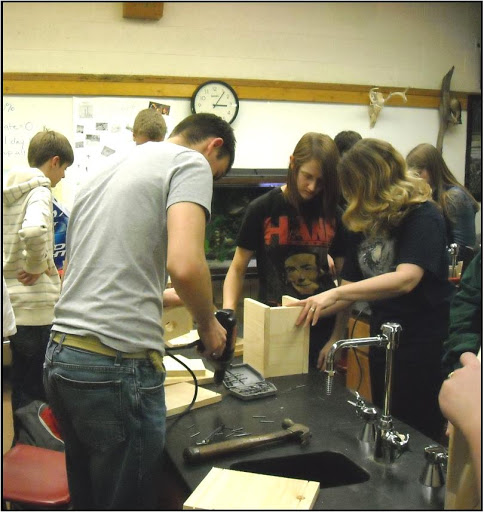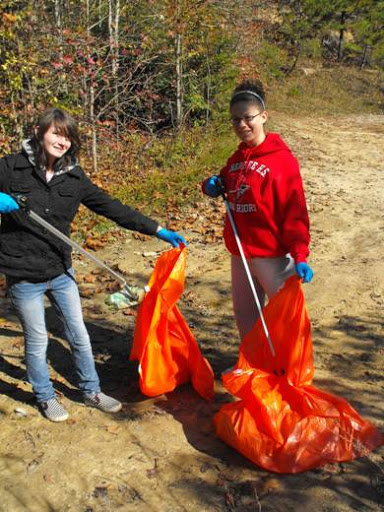Based on the work of
Woodland Community Land Trust
Northeast Tennessee
The TN-KY Helpers, a youth organization affiliated with the Woodland Community Land Trust (WCLT), was created out of the need to do clean-ups and involve youth. This project became a vehicle to involve youth volunteers in a variety of service projects. An OSM/ VISTA contacted some local young people through the organization and participation grew through a snowball effect. WCLT was able to create a youth group that conducted litter clean-ups, participated in and led a Martin Luther King Jr. Day of Service event, raised its own money and—perhaps most importantly—fostered ownership of the project. WCLT recommends having an adult in place to keep the group organized who knows the youth volunteers’ schedules and who can provide transportation.

Tested by
Little Beaver Creek Land Foundation
Northeast Ohio
Little Beaver Creek Land Foundation (LBCLF) had no outreach initiatives to engage the youth in their watershed. Moreover, youth in the community weren’t involved in any conservation efforts in a consistent, ongoing way. LBCLF approached the Beaver Local High School Science Club advisor to discuss the possibility of her Science Club students working with the LBCLF on a conservation project. The Science Club came up with the idea of establishing a bluebird trail at Hellbender Bluff near the high school. The students would build the boxes, help put them up, and then monitor them on a regular basis. After a year of planning, one LBCLF volunteer and two adults and 10 students with the Science Club met after school at the high school to assemble boxes. A total of 20 bluebird boxes were constructed to be posted at Hellbender Bluff. Science Club students also helped with a tree planting at Hellbender Bluff County Park and stream monitoring on a section of the Middle Fork of Little Beaver Creek that runs behind the school. Though this project unfolded slowly due to the difficulties of coordinating with busy students and a busy teacher, the bluebird trail is an excellent project for the Science Club students and an asset to the community.
Tested by
Upper Pecos Watershed Association
Northern New Mexico
The Upper Pecos Watershed Association (UPWA) had very little youth involvement in volunteer activities and clean-ups. UPWA had taught the importance of clean water and monitoring in local schools, but having a youth task force responsible for monitoring and maintaining a portion of the river would support both the longevity of UPWA and the health of the river. Youth involvement was minimal during the school year, but UPWA was able to help with Trout Unlimited’s Trout in the Classroom program and taught a water course in an afterschool program. UPWA was also involved in a youth group managed by a board member called Sembrando Semillas, a youth agricultural organization organized by the NM Acequia Association. An OSM intern worked to get the UPWA youth group off the ground by advertising around Pecos and trying to be involved in as many youth-oriented events as possible. The primary challenge, however, was having no full-time staff or other adult volunteers to take the lead with the youth program. Most board members and volunteers were already over-committed, so UPWA had to tag along with others efforts instead of implementing their own separate youth program. Setting up a youth group would require a lot of work to keep the kids engaged and could potentially be its own full-time job.

“I think there’s potential for this to be a great practice. With commitment from the youth advisor, and projects that give the kids a sense of ownership and buy-in, it is has the potential to develop a very actively interested and engaged youth group, who may become our conservation leaders of the future!”
-Little Beaver Creek Land Foundation
